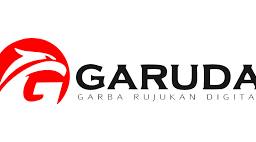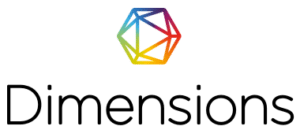Pemanfaatan Software GeoGebra dalam Materi Geometri Analitik untuk Siswa Kelas XI: Survey terhadap Respon Siswa
DOI:
https://doi.org/10.32585/absis.v7i1.6319Abstract
Analytic geometry is a branch of mathematics that requires a deep understanding of concepts, yet it often poses significant challenges for high school students. This study aims to describe students' responses to the use of GeoGebra software in learning mathematics, specifically in the context of analytic geometry. Employing a descriptive method with a quantitative approach, the research was conducted with a population of 150 eleventh-grade students from SMA Negeri 10 Pontianak. A sample of 75 students was selected using random sampling techniques. Data were collected through questionnaires and analyzed using descriptive statistics. The findings revealed that students responded very positively to the use of GeoGebra software in the learning process of analytic geometry. All participants reported that the software enhanced their understanding of analytic geometry concepts, particularly in terms of visualization. Furthermore, nearly all students expressed their intention to continue using GeoGebra and recommended it to others, citing its user-friendly interface and its ability to make learning more engaging and interactive. This study highlights the potential of GeoGebra as an effective tool for improving the teaching and learning of analytic geometry.
Downloads
References
Afhami, A. H. (2022). Aplikasi Geogebra Classic terhadap Pemahaman Konsep Matematika Siswa pada Materi Transformasi Geometri. Plusminus: Jurnal Pendidikan Matematika, 2(3), 449–460. https://doi.org/10.31980/plusminus.v2i3.1119
Asngari, D. R. (2015). Penggunaan Geogebra dalam Pembelajaran Geometri. Jurnal Pendidikan Matematika FKIP Universitas Lampung.
Fathurrahman, F., & Fitrah, M. (2023). Software Geogebra Pada Pembelajaran Matematika: Studi Literatur. Jurnal Ilmiah Matematika Realistik, 4(1), 33–40.
Lestari, L., Sugiarto, S., & Kurniati, R. (2023). Systematic Literature Review (SLR): Pemanfaatan Software Geogebra dalam Pembelajaran Matematika. Jurnal Review Pendidikan Dan Pengajaran (JRPP), 6(4), 3275–3287.
Nur’aini, I. L., Harahap, E., Badruzzaman, F. H., & Darmawan, D. (2017). Pembelajaran Matematika Geometri Secara Realistis Dengan GeoGebra. Matematika, 16(2). https://doi.org/10.29313/jmtm.v16i2.3900
Rahadyan, A., Hartuti, P. M., & Awaludin, A. A. R. (2018). Penggunaan Aplikasi Geogebra dalam Pembelajaran Matematika di Sekolah Menengah Pertama. Jurnal PkM Pengabdian Kepada Masyarakat, 1(01), 11–19.
Septian, A. (2017). Penerapan GeoGebra Untuk Meningkatkan Kemampuan Pemecahan Masalah Matematis Mahasiswa Program Studi Pendidikan Matematika Universitas Suryakancana. Jurnal Prisma Universitas Suryakancana, 6(2), 180–191.
Serin, H. (2018). Perspectives on the Teaching of Geometry: Teaching and Learning Methods. Journal of Education and Training, 5(1), 1. https://doi.org/10.5296/jet.v5i1.12115
Sholihah, S. Z., & Afriansyah, E. A. (2017). Analisis Kesulitan Siswa dalam Proses Pemecahan Masalah Geometri Berdasarkan Tahapan Berpikir Van Hiele. Mosharafa: Jurnal Pendidikan Matematika, 6(2), 287–298. https://doi.org/10.31980/mosharafa.v6i2.451
Suryoto, S., Kartono, K., & Herdiana, R. (2023). Pemanfaatan aplikasi geogebra dalam pembelajaran matematika yang interaktif, menarik, dan menyenangkan bagi siswa sekolah menengah kejuruan. Jurnal Pasopati, 5(4).
Susilo, B. E., & Sutarto, H. (2023). Geometri: Manfaat, pembelajaran dan kesulitan. Bookchapter Pendidikan Universitas Negeri Semarang, 6.
Syahbana, A. (2016). Belajar Menguasai Geogebra (Program Aplikasi Pembelajaran Matematika). NoerFikri Offset.
Zhang, Y., Wang, P., Jia, W., Zhang, A., & Chen, G. (2023). Dynamic visualization by GeoGebra for mathematics learning: a meta-analysis of 20 years of research. Journal of Research on Technology in Education, 1–22. https://doi.org/10.1080/15391523.2023.2250886
Downloads
Published
How to Cite
Issue
Section
License
Copyright (c) 2025 Desty Septianawati, Zulkarnain, Ressy Rustanuarsi

This work is licensed under a Creative Commons Attribution-ShareAlike 4.0 International License.
Authors who publish with the Absis: Mathematics Education Journal agree to the following terms:
- Authors retain copyright and grant the journal the right of first publication with the work simultaneously licensed under a Creative Commons Attribution License (CC BY-SA 4.0) that allows others to share the work with an acknowledgment of the work's authorship and initial publication in this journal.
- Authors are able to enter into separate, additional contractual arrangements for the non-exclusive distribution of the journal's published version of the work (e.g., post it to an institutional repository or publish it in a book), with an acknowledgment of its initial publication in this journal.
- Authors are permitted and encouraged to post their work online (e.g., in institutional repositories or on their website) prior to and during the submission process, as it can lead to productive exchanges, as well as earlier and greater citation of published work.







